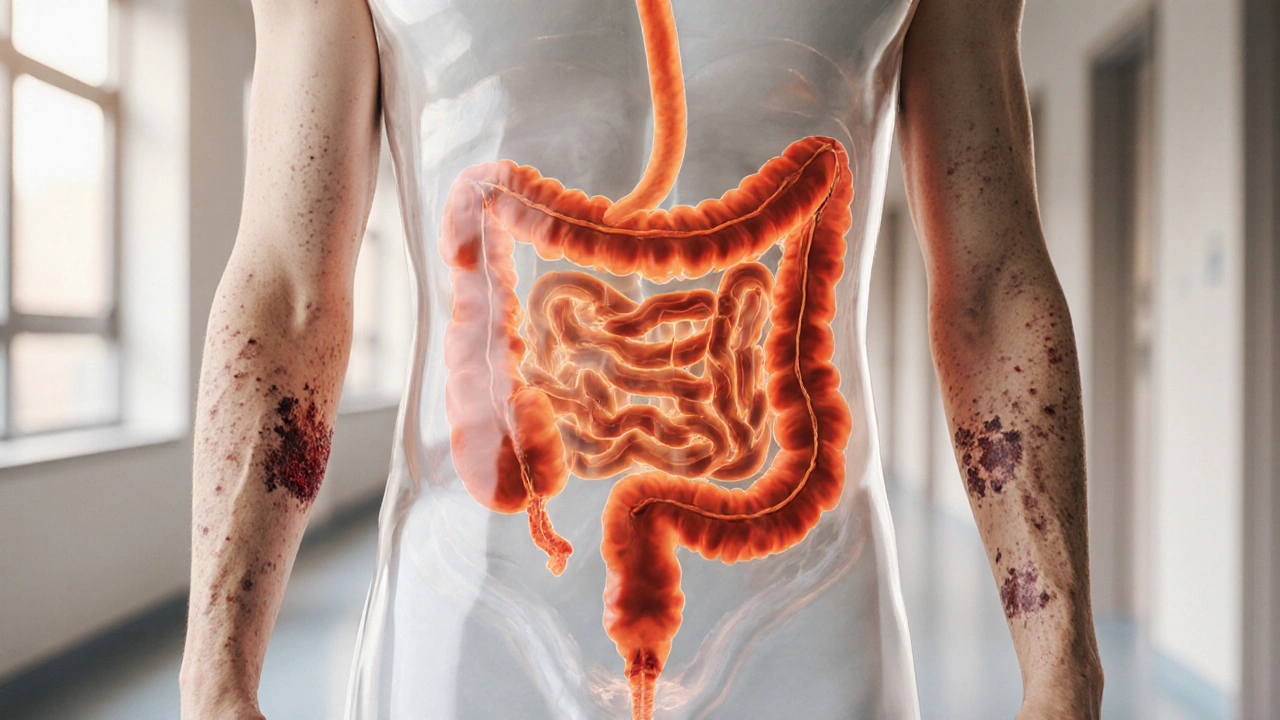Ulcerative Colitis Skin Conditions Explained
When dealing with ulcerative colitis skin conditions, skin problems that arise as extraintestinal manifestations of ulcerative colitis. Also known as UC skin manifestations, they signal that inflammation is affecting more than just the colon.
Understanding the broader picture starts with ulcerative colitis, a chronic inflammatory bowel disease that primarily damages the lining of the large intestine. It belongs to the larger family of inflammatory bowel disease, a group of disorders, including Crohn's disease, characterized by persistent gut inflammation. Both conditions can trigger extraintestinal manifestations, meaning symptoms show up outside the digestive tract.
Common Skin Manifestations
Patients often notice two skin conditions most linked to ulcerative colitis: pyoderma gangrenosum and erythema nodosum. Pyoderma gangrenosum presents as painful, rapidly enlarging ulcers, usually on the legs. Erythema nodosum shows up as tender, red nodules under the skin, often on the shins. These are classic examples of how gut inflammation can “spill over” into the skin. In semantic terms, ulcerative colitis skin conditions encompass pyoderma gangrenosum, and they also include erythema nodosum.
Why do these skin issues appear? The prevailing theory is that immune cells activated in the gut mistakenly target skin tissue, a process known as molecular mimicry. This relationship means that controlling intestinal inflammation often improves skin symptoms. Biologic therapies such as anti‑TNF agents not only calm the colon but also reduce the frequency of pyoderma gangrenosum flares.
Another frequent skin concern is aphthous stomatitis, small ulcers inside the mouth. While not as dramatic as pyoderma gangrenosum, these ulcers can be painful and affect nutrition. Their presence further illustrates the link: ulcerative colitis triggers extraintestinal manifestations, which in turn influence patient quality of life.
Managing skin manifestations requires a two‑pronged approach: treat the underlying bowel disease and address the skin directly. Topical steroids, wound care, and systemic immunosuppressants are all tools doctors may use. For many, starting a biologic like infliximab leads to simultaneous remission of colon symptoms and skin lesions.
It’s also worth noting that some medications used for ulcerative colitis, such as sulfasalazine, can cause drug‑induced skin rashes. Differentiating between disease‑related and drug‑related skin problems is crucial, because the solution may be as simple as switching medicines.
Below you’ll find a curated list of articles that dig deeper into each of these topics—ranging from the science behind pyoderma gangrenosum to practical tips for coping with erythema nodosum during a flare. Whether you’re a patient looking for relief or a caregiver seeking clear guidance, the posts ahead give actionable insight into ulcerative colitis skin conditions.
Explore why ulcerative colitis often triggers skin issues like pyoderma gangrenosum and psoriasis, learn the immune link, and get practical tips for treatment and care.



